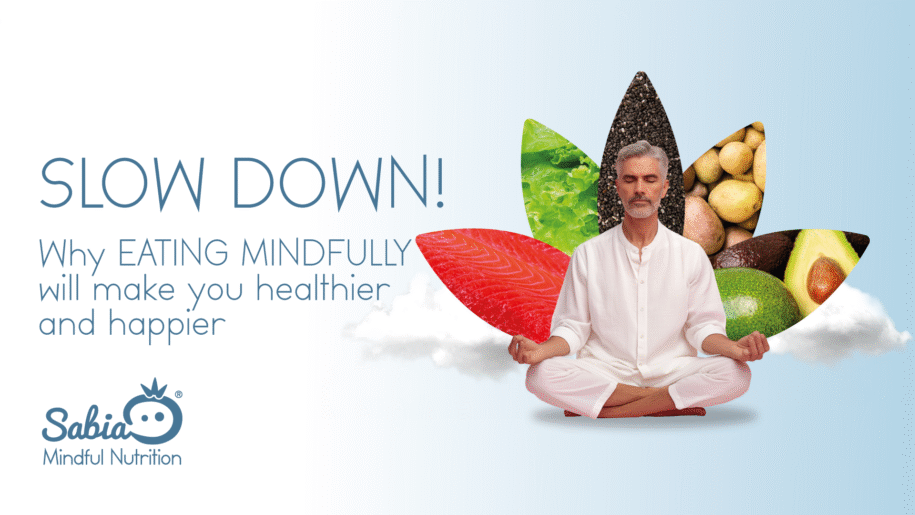Mindful Eating: What It Is and How to Get Started
In a world where we often eat on the go, mindful eating is becoming a practice of choice for many seeking a more balanced and healthier lifestyle. Mindful eating is all about slowing down, paying attention to what you eat, and being fully present during meals. This practice extends beyond the simple act of eating and deeply connects with both emotional and physical well-being. If you find yourself eating mindlessly, perhaps in front of a screen or while multitasking, mindful eating can help you reconnect with your food and improve your overall health.
In this article, we’ll explore what mindful eating is, its health benefits, and how to practice it effectively, allowing you to transform your eating habits for better nutrition and mental health.
What Is Mindful Eating?
Mindful eating is the practice of paying full attention to the experience of eating and drinking. It involves noticing the colors, textures, and flavors of your food, and appreciating the entire eating experience. This approach encourages eating without distractions, such as TV, phones, or multitasking, and instead focuses on the act of eating itself.
Unlike traditional eating habits, where you might rush through meals or eat mindlessly, mindful eating helps you connect with your body’s natural hunger cues, recognize when you are satisfied, and develop a more balanced relationship with food. Mindful eating aligns closely with the broader concept of mindfulness, which involves being present in the moment, without judgment or distractions.
The Role of Mindfulness in Eating
Mindfulness involves focusing on the present moment and being fully engaged with your experiences. When applied to eating, it encourages you to savor each bite, notice your body’s signals, and make intentional choices about what, when, and how you eat. This practice can help you break free from emotional eating patterns and improve your relationship with food.
The Benefits of Mindful Eating
Mindful eating offers a variety of health benefits, both physical and emotional. Here are some of the key advantages:
1. Weight Management
One of the most significant health benefits of mindful eating is its ability to support weight management. By becoming more aware of hunger and fullness cues, you’re less likely to overeat or snack mindlessly. Mindful eaters tend to enjoy smaller portions because they take the time to listen to their bodies and recognize when they are satisfied.
2. Improved Digestion
When you eat mindfully, you are more likely to chew your food thoroughly, which aids in better digestion. Slowing down while eating allows your body to properly break down food and absorb nutrients, preventing issues such as bloating, indigestion, or discomfort.
3. Better Mental Health
Mindful eating helps reduce stress and anxiety surrounding food. It allows you to approach meals with a calm and focused mindset, rather than engaging in negative self-talk or feeling guilty after eating. Over time, this practice can lead to improved mental clarity and emotional stability.
4. Reduced Risk of Emotional Eating
Emotional eating is a typical response to stress, boredom, or sadness. Mindful eating can help break this cycle by teaching you to differentiate between physical hunger and emotional cravings. By focusing on the present moment and tuning into your body, you are better equipped to avoid eating in response to emotions.
5. Enhanced Mind-Body Connection
Mindful eating fosters a deeper connection between your mind and body. By paying attention to how different foods affect your body, you can better understand what nourishes you and what may cause discomfort. This awareness can help you make more informed choices about your diet.
How to Practice Mindful Eating
If you’re ready to adopt mindful eating habits, here are some practical tips to get started:
1. Slow Down and Chew Thoroughly
One of the most important mindful eating tips is to slow down. Avoid rushing through your meals. Take your time with each bite, and chew your food thoroughly. This not only aids in digestion but also gives you more time to recognize when you’re full.
2. Eliminate Distractions
Eating while distracted can lead to overeating and poor digestion. Turn off the TV, put away your phone, and focus solely on your meal. Create a calm and peaceful environment to enhance your eating experience. This will allow you to truly taste and appreciate your food.
3. Pay Attention to Hunger Cues
Mindful eating involves tuning into your body’s natural signals. Before you eat, assess your hunger level. Are you truly hungry, or is it just a craving? During the meal, pay attention to how your body feels. Do you feel satisfied? Full? Continuing to check in with yourself helps you avoid overeating.
4. Practice Gratitude for Your Food
Before you begin eating, take a moment to appreciate your food. Be thankful for the nourishment it provides and the effort that went into preparing it. This simple act of gratitude can help you cultivate a healthier relationship with food and foster greater mindfulness.
5. Use All of Your Senses
Engage all of your senses when eating. Look at your food, notice its colors and textures. Savor the aroma and flavors with each bite. The more you engage your senses, the more mindful your eating experience will be.
Mindful Eating and Emotional Eating
Mindful eating is especially beneficial for those who struggle with emotional eating. Emotional eating often stems from stress, anxiety, or boredom, and can lead to mindless overeating. By practicing mindfulness, you can become more aware of your emotional triggers and better manage your eating habits.
How Mindful Eating Helps with Emotional Eating
Mindful eating teaches you to observe your emotions without acting on them impulsively. Instead of reaching for food to cope with stress, you learn to pause and reflect on your feelings. This pause gives you time to decide if you’re hungry or if you’re eating out of emotional need.
Mindfulness also helps you practice self-compassion, which can reduce the guilt and shame often associated with emotional eating. By accepting yourself and your emotions, you can break free from the cycle of emotional eating.
Common Challenges and How to Overcome Them
While mindful eating offers numerous benefits, it’s not always easy to practice. Here are some common challenges and how to overcome them:
1. Eating on the Go
Modern life often leads to eating on the go, whether it’s snacking while working or grabbing fast food between errands. To overcome this, plan ahead and prepare meals in advance. When you do sit down to eat, make it a priority to slow down and focus on your food, even if it’s just for a few minutes.
2. Overcoming Habitual Eating Patterns
Changing old habits can be difficult. If you’re used to eating quickly or while distracted, it may take time to develop new habits. Start small by incorporating one or two mindful eating techniques into your meals and gradually build from there.
3. Dealing with Stress and Emotional Triggers
Stress can make mindful eating more challenging. If you tend to turn to food when you’re stressed, try incorporating relaxation techniques into your daily routine, such as deep breathing or meditation. These practices will help you stay calm and centered during meals.
Conclusion: Embrace Mindful Eating for a Healthier Lifestyle
Mindful eating is more than just a trend—it’s a powerful tool for improving your health and well-being. By slowing down, paying attention to your body’s signals, and eliminating distractions, you can cultivate a healthier relationship with food. Whether you’re trying to manage your weight, improve digestion, or reduce emotional eating, mindful eating offers a simple and effective solution.
Start practicing mindful eating today. Begin with one or two small changes, such as eating without distractions or paying attention to hunger cues, and gradually incorporate more mindfulness into your eating habits. Over time, you’ll notice improvements in both your physical and emotional health.
We’d love to hear about your experience! Try mindful eating for a week and share your thoughts in the comments below. Don’t forget to subscribe to our newsletter for more helpful tips on mindfulness and nutrition.


